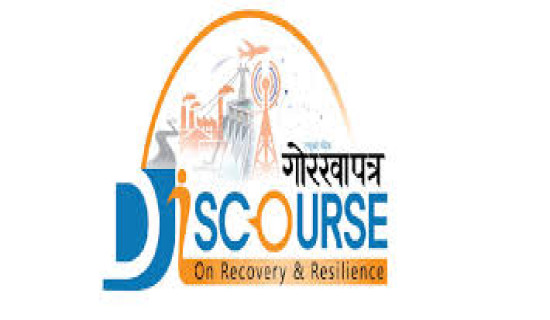- Thursday, 18 December 2025
58thAnniversary Special Supplement
Unlimited Options In News Platform
Media platforms have changed over centuries due to societal changes, technological advancements, and shifts in communication patterns. From the spoken word to the digital realm, each era has presented unique challenges and opportunities, influencing how information is shared, consumed, and understood. The ongoing integration of cutting-edge technologies promises an exciting future for media platforms.
The earliest form of communication was oral tradition, where stories, history, and cultural knowledge were verbally passed down and shared. While it took time for information to reach different corners, it often underwent alterations, resulting in variations from the original content.
There were not many public issues that would reach the outskirts of the globe from one place. There were not many rights ensured for the people to seek freedom of speech and information.
The Romans published a daily gazette called ‘Acta Diurna’ in around 59 BC. They were carved on stone or metal and presented on message boards in public places. It was not until Johannes Gutenberg’s 15th-century invention of the movable type printing press turned the tide in the sector of media.
Before it, books were handwritten, and no two copies were the same. The press facilitated the mass production of books, making information more accessible and reducing dependence on oral communication.
The invention of and access to cameras opened a new horizon in the news sector. Photographs were first used in newspapers in the late 19th century. The integration of visual elements like photographs and illustrations enhanced storytelling.
The invention of radio in the early 20th century propelled audio-based communication to the forefront, establishing itself as a popular source for news, entertainment, and cultural dissemination. By the mid-20th century, television had emerged as a dominant medium, offering both audio and visual content. Meanwhile, the Internet, in particular, revolutionised media by enabling global communication, online publishing, and the creation of multimedia content.
Following the advent of the Internet, the world underwent a transformative shift. Never before had it been so effortless to send or receive information in both audio and visual formats on a personal level. However, the 21st century has witnessed a competition to establish dominance as the primary news platform.
Even now, new technologies are emerging as media platforms. For instance, social media platforms like Facebook, X (formerly Twitter), TikTok, and YouTube have reshaped how information is created, shared, and consumed. With internet access, information, data, and activities, among others, are at our perusal. Individuals on YouTube create content on contemporary and historical topics, delivering presentations. Some of these videos exceed the viewership of those produced by major news outlets.
Digital public platforms have been created on social media based on interests, and issues of interest are shared for free. It is what news platforms would do commercially. However, prominent media platforms should be mindful of the general public. Many news platforms adopt commercialization for survival, which leads them to boycott specific issues in a world where everything is visible to the general public with diverse interests. This raises concerns, prompting people to question whether they should continue trusting the respective media houses.
In his 80s, my relative, a retired professor, dedicates his days to researching global contemporary issues. Having witnessed the changes brought about by news platforms, he now expresses concerns about trust, stating that these platforms no longer have anyone to fear.
According to him, the crucial factor lies in how the news is presented. I remember him saying, “We can discern the preferences and biases of a respective media house by the way they present certain news. However, we can also determine if the news is unbiased. So, I've devised a personal approach. I seek live videos on different online platforms regarding a specific issue to see what is happening with my own eyes.
Moreover, there are now technologies based on artificial intelligence (AI) that transcribe what is happening in a certain video as well. AI technologies are also being used to run online news platforms, read out news, make presentations, and edit news. During my college days, I visited Bahrabise in the Sindhupalchowk district for field research on the prevalence of radios in rural Nepal. Many households in the area had radios constantly playing, serving as a source for news, music, and agricultural knowledge programmes throughout the day.
Online news platforms deliver real-time news, pressuring newspapers to offer fresh content every morning to distinguish themselves from what people have already read on the Internet. Despite providing the same information for free online, the print version's sales do not necessarily rise. The availability of free e-papers online fuels the debate on whether newspapers should continue to be printed. Nevertheless, some individuals prefer reading newspapers in print rather than accessing them through electronic devices on the Internet.
The evolution of media platforms has been an interesting journey, transforming from rudimentary forms of communication to a sophisticated and interconnected digital platforms. Various factors, such as personal attitudes, age, cultural background, and technological literacy, influence how people actively cope with new technologies and media platforms.
Some individuals may resist or be skeptical about adopting new technologies. This can be due to concerns about privacy, security, or a preference for traditional methods. They can seek support from tech-savvy friends, family members, or online communities to navigate challenges and gain a better understanding of new platforms.
As new forms of media platforms continually enter the market, there will be those who embrace the innovations and others who prefer to stick with older platforms. In this age of endless possibilities, we should remain open to new technologies, much like our recent endeavors with AI. One thing is certain: people will find the best way for them to view, read, or listen to topics of interest, considering the abundance of options in the media.
(Poudel is a journalist at The Rising Nepal)

















